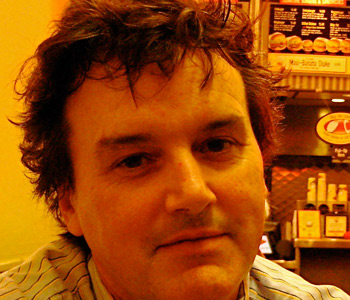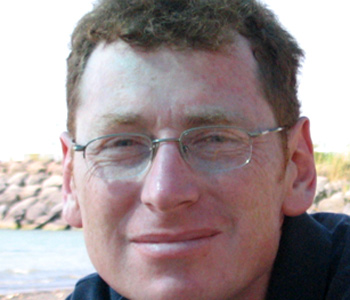Keith Wrightson
Ralph Tailor’s Summer: A Scrivener, his City and the Plague
Yale University Press
224 pages, 6 1/8 x 9 1/4 inches
ISBN 978 0300174472
This book is a study of the English city of Newcastle-upon-Tyne during the plague epidemic of the summer of 1636, which killed almost half the population. It is also about what that experience reveals about an urban society and culture in this period.
Unlike most studies of the plague in early modern Europe, it is a study “from below.” The focus is not on the response of government, or on the demographic impact of epidemic mortality, or its religious interpretation (though all these figure). It is on how ordinary people responded to, and coped with, a devastating threat to their families and their community.
The narrative structure is provided not only by the course of the epidemic (which is traced in detail) but also by the story of a particular individual and the people he encountered. His name was Ralph Tailor, a 25-year-old scrivener, who wrote many of the documents from which the experience of the plague can be reconstructed. He prepared wills for plague victims, inventoried their goods, and later gave evidence in court when wills were questioned, describing what he had witnessed. His activities can be traced throughout the epidemic and its aftermath. They can be used as a kind of thread of personal narrative to link it all together—much as Defoe used the voice of an anonymous tanner as the narrator of his Journal of the Plague Year (1722). But this is not fiction or drama-documentary. Ralph Tailor really existed. What he did, and saw, is documented.
Because of his prominence in the story, I called the book “Ralph Tailor’s Summer.” But the book is subtitled “A Scrivener, his City and the Plague,” because Ralph Tailor’s experience is used to bind together what is very much a study of his world; the built environment of his city; its social structures, economy, material culture, and religious controversies; the relationships between its people; the values by which they lived and died.
Unlike most studies of the plague my book does not endorse what has been called the “dystopian vision” of the plague narratives published in the period. They tended to stress the threat or actuality of social collapse in order to reinforce the hold of religious and secular authority.
I offer a different account of the plague. The book is more nuanced, more rooted in specific recorded behavior, and also more optimistic. It shows how social survival depended upon the continuing strength of basic social obligations within the urban community. It stresses people’s resilience: how they survived, or provided for their survivors, and for the rebuilding of their world.
Finally, this is a book about historical documents: how they were made, what they tell us, and how they can be used to recreate a lost world. I try to involve readers in the problems raised by the nature of historical evidence and its interpretation.
In researching and writing this book I did not set out to test any particular theory or promote any particular historical interpretation. The project began with the accidental discovery of a rich cache of material relating to the Newcastle plague of 1636, and the part that Ralph Tailor played in it. It developed as I tried to elaborate upon that initial find by identifying and exploring further sources relating to the plague.
To this extent the book was driven by the sources and by my curiosity about how they could be used to recapture the experience of the plague more fully than had previously been attempted. In trying to do that, I found that the many records generated by the plague also provided a point of entry to the society and culture in which it took place. I hope the end result says something distinctive about the impact of plague, but it also says something about households, neighborhoods, social networks, the urban economy, living standards, religion, social memory, litigation, the role of scriveners in a partially literate society, people’s senses of time and place, their emotional palettes, and much more.
All this can be done in a relatively short book because methodologically it is a “microhistory.” It is an intensive study of a particular event and place, using all the available forms of evidence.
The reduction of scale and intensity of focus involved in microhistory facilitates closer scrutiny of the sources. It allows one to explore things otherwise inaccessible, to notice things previously unobserved, to find unexpected connections and experience unanticipated insights. It can reveal more fully the social structures, networks of relationships and webs of meaning within which people in the past lived their lives. It makes possible a more vivid, multi-dimensional, apprehension of the “lived experience” of the past.
Throughout the book, I tried to involve the reader in the dialogue between the historian and the sources: introducing the evidence, putting it in context, posing questions, and exploring interpretative alternatives.
And I adopted a narrative form—though not straightforward story-telling. The book’s narrative is analytical, an explanatory process as well as a sequence of happenings.
The basic structure is provided by the course of the epidemic itself, and by Ralph Tailor’s activities. Those interconnected stories, however, are punctuated with explanatory and contextual discussion. I found that using short chapters, and alternating narrative and analysis both within and between them, was the best way to sustain the momentum of the book, while at the same time explaining events, exploring particular dimensions of the experience of the plague, and reflecting on their meaning. The chapters are intended to be units of sense, by which I mean stages in the gradual unfolding of a meaningful analytical narrative.
In the course of my career I have alternated between large scale, big sweep, history, and microhistorical studies of this kind. Both have their place, but work of the latter kind gives me most satisfaction.
Your browsing reader might be attracted by the striking cover of the book, which shows a dying man making his will, while a friend leans forward at his bedside, looking at him intently. It is the frontispiece from the Braithwait Bible, a beautifully customized Geneva Bible, made around 1607 in memory of Thomas Braythwait, which is now in the collection of the Yale Center for British Art. Having got that far, I hope the browser would pick up the book and open it first at the Prologue, and then perhaps turn to the final page. (That is what I do myself in such situations: first paragraph and then last paragraph.)
On page 1, the reader would immediately encounter a reproduction of the elegant and elaborate signature of Ralph Tailor, which is described in my first paragraph. It was my own encounter with that signature that began this book. The following pages describe how I came upon it, at the bottom of a deposition made before the probate court of the Bishop of Durham in 1637. It stopped me in my tracks because it was so unusual. Most people in this period signed depositions with a rather labored hand, or simply made a mark because they could not write. This was the work of a professional penman.
As a result, I read the deposition, and found in it an account of how on 8 August 1636, Ralph Tailor, accompanied by two witnesses, climbed up on to the city wall of Newcastle in order to get close to the attic window of a house located by the wall. From that window a man called Thomas Holmes dictated the terms of his will, which Ralph took down. Thomas Holmes was dictating his wishes from the attic window because he was isolated there. He was dying of the plague.
That deposition first alerted me to the fact that the testamentary records of 1636-7 contained a wealth of vivid evidence about the terrible plague outbreak in Newcastle in 1636. It also introduced me to Ralph Tailor. As I read on I encountered him repeatedly in the records, and both the potential of the material and the presence of such a central character caught my imagination. My Prologue describes all this. It is intended to explain how a historical research project of this kind gets started. If the reader finds that intriguing, then he or she may well find the book rewarding.
The final paragraph of the book, on p. 161, is a reflection on how most past events (including the plague of 1636) fade and are forgotten—but also on how they can be recovered. The records are still there. They tell stories. They name names. They contain voices that deserve to be listened to. My book is an effort to hear and interpret them.
All historical events leave echoes, but they do not resonate with equal force or share the same capacity to persist.
Phillip Abrams defined an “event” as, “a happening to which cultural significance has successfully been assigned.” Accordingly, most historical writing is focused upon canonical events that have become regarded, in particular societies or cultures, as historically significant.
William H. Sewell goes further to suggest that, “historical events should be understood as happenings that transform structures.” Such meaningful and transformative events echo loudly from the start. They are the great events that become accepted as the chronological landmarks and reference points of history as we conventionally understand it.
Most actual events, however, are assigned no such larger societal meaning and lack such transformative power. They may have been of no less importance to the people who lived them, but they fade, fall into the shadows, become devalued and irrelevant in the grander scheme of things. The Newcastle plague of 1636 was such an event. Surprisingly soon it was forgotten in the official history of the city it devastated.
I am interested in such lesser, gradually forgotten, events; and the historically insignificant people who lived them. I find both much more engaging than the conventional historical agenda. It is more of a challenge to recover the texture and meaning of these moments and these lives.
This does not mean that I am unaware of the significance of “great historical events.” They are an essential starting point in anyone’s historical education. But they are a very limiting end point. I want people to have the opportunity to move on and consider other histories. They are no less interesting and significant.
I have always been more fascinated with the more obscure narratives of what was going on between and around the great events. I think the real meaning lies there, in the sense that they can reveal the complexities and ambiguities of former states of being. People lived their own lives in ways that intersected only partially with the grand narratives of historical change. I am drawn to the more ordinary agents of history. I am intrigued by their very different time lines. I want to tell their stories. I think that helps us, in Peter Laslett’s phrase, to “understand ourselves in time.” This book is another small contribution to that project.




We don't put paywalls. We don't distract you with ads. We don't sell your data.
Please help to keep this running!